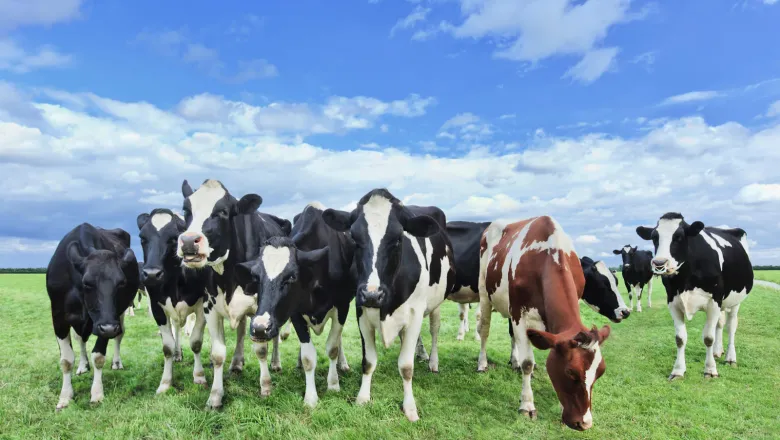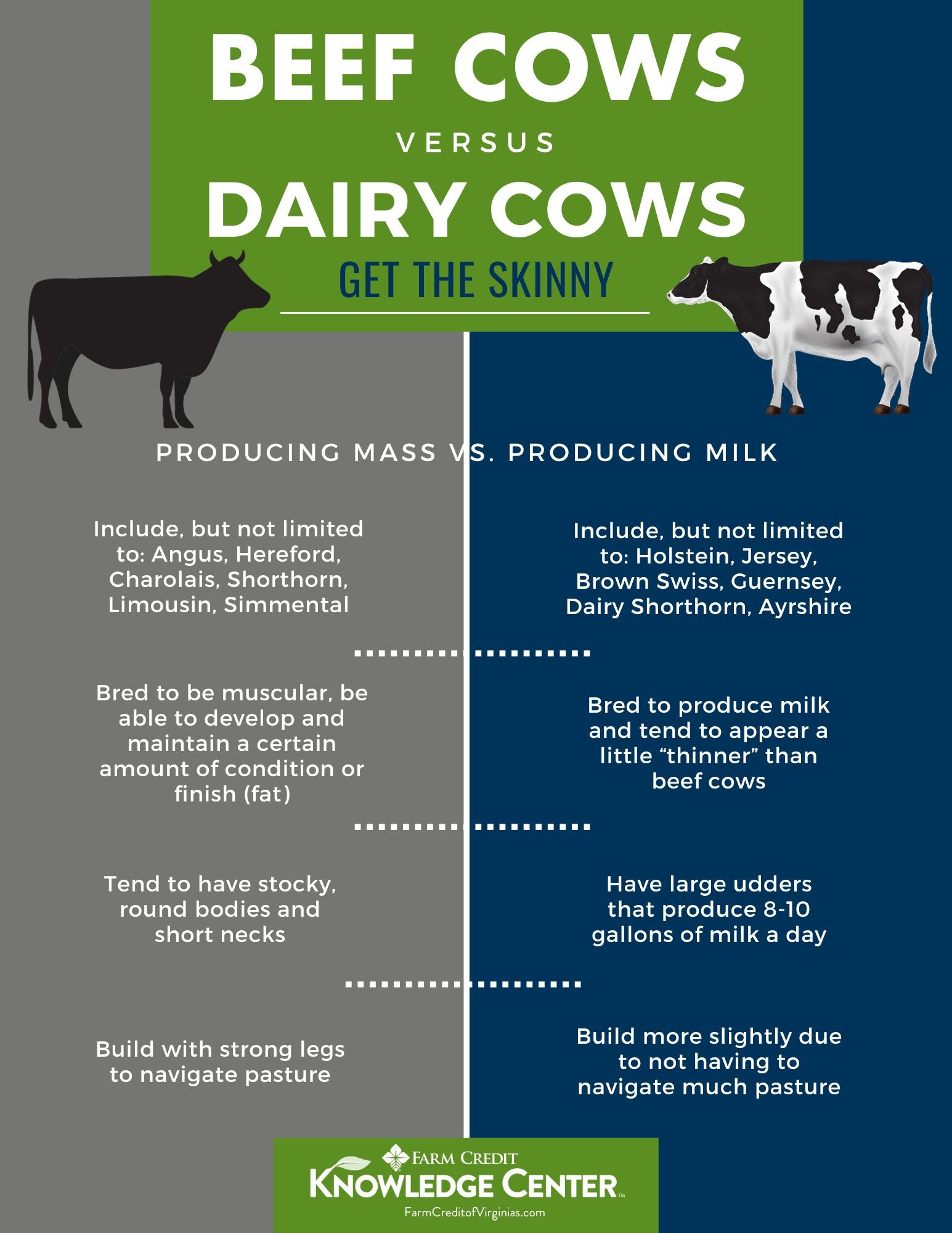Dairy Cows vs Beef Cows: What You Need to Know

Educator Resources
What is the difference between dairy cows vs. beef cows?
We had steaks last night for dinner (happens a lot in our house, when you raise beef cattle, beef in some form tends to be on the menu a lot!), at the very specific request of our five year old. Said five year old is currently very much in to associating where different things come from, so it was not a total surprise when he asked where the beef he was eating comes from. Knowing my child, I knew this was not a question of where the specific animal had originated, but rather a more general question of where beef comes from. While we have had this conversation several times, he likes to reaffirm what he already knows. Upon reminding him that beef comes from beef cows like the ones we raise, he promptly responds with “and milk comes from dairy cows!”
He is absolutely right, and it’s a distinction that I think is important for him, and consumers in general to grasp; different cattle have been selected and bred to do different tasks, and as a result, they may look different. On our farm, we raise Angus (solid black) and Hereford (red with white faces and white on the legs, belly, tail and neck), and their crosses, baldies (usually black, but can be red on occasion, with varying degrees of white on their face). These are beef cattle (and there are several more breeds that are used for beef as well, in addition to crossbred cattle which are a combination of breeds), and as such they are bred to be muscular, be able to develop and maintain a certain amount of condition or finish (fat), and for the females to be able to produce enough milk to raise a strong, healthy calf that grows well. When you drive in our fields, you tend to see cattle that have plenty of “flesh”, although the amount can vary depending on what stage of life these cattle are in (for example, if they have just calved and are trying to produce enough milk for the calf, especially in the fall and winter when grass is a little less plentiful, they can be a little thinner, or if they are close to calving they can look a little heavier).
Dairy cows on the other hand, tend to appear a little “thinner”. The most popular dairy breed is Holstein (black and white spots), although there are several other breeds as well that have different color patterns. If you happen to drive by a field or a farm and see dairy cows, they may appear skinny to you, if you are used to seeing beef cattle. But that is because dairy cattle are bred for a completely different task; their main job is to produce milk, much more than just what a calf would need. A great blog post written by Jodi McDonnell, who is a 3rd generation dairy farmer and owner of Of Kids and Cows blog, that does a good job of sharing why dairy cows are skinny and answers the common question, what do dairy cows look like.
To view the Beef Cow vs. Dairy Cow infographic, click here.

“…Reba is a dairy cow, not a beef cow. Reba and her herd mates are fed a ration, which is balanced by their own personal nutritionist, which is designed for milk production. The reason you can see her ribs is not because she is malnourished or underfed. When this photo was taken of Reba she was producing over 110 pounds of milk a day…”
Whether a farmer raises beef or dairy cattle, or some other species of livestock, they are invested in making sure that those animals are well taken care of; not only because they depend on those animals for their livelihoods, but also because they care about them. While this may look a little different for different animals, each farmer is dedicated to taking care of the animals in their care 365 days a year.